10 Tools to Enhance Your Job Scheduling Calendar Efficiency

Introduction
Effective job scheduling is essential for maximizing productivity within any organization. Yet, many teams face significant inefficiencies that can derail their efforts. The right tools can transform scheduling from a cumbersome task into a streamlined process, enhancing collaboration and ensuring optimal resource utilization. With a plethora of options available, how can organizations pinpoint the best solutions tailored to their unique needs? This article delves into ten innovative tools designed to elevate job scheduling calendar efficiency, providing insights into their features and the tangible benefits they deliver.
AutoSuite: Instant Meeting Scheduling for Seamless Coordination
AutoSuite’s Schedulelink feature transforms the way meetings are set up in the job scheduling calendar, allowing users to schedule appointments instantly and effortlessly. Communication inefficiencies can lead to significant productivity losses, with employees spending an average of 3.0 hours per week managing meetings. This equates to an astonishing annual cost of $5,914 per employee, or 36 minutes each day. By automating the booking process, AutoSuite minimizes the risk of double reservations and scheduling conflicts, which are common challenges in traditional job scheduling calendar methods.
The impact of inefficient meeting management is profound. For instance, reducing unproductive meeting time by just one hour per week could save a company with 5,000 employees nearly $9.8 million annually. Furthermore, 33.7% of individuals rearrange meetings due to insufficient attendees, underscoring the importance of efficient planning to ensure full participation. As productivity expert Caterina Fake aptly noted, “Working on the right thing is probably more important than working hard.”
AutoSuite’s innovative job scheduling calendar solutions not only enhance collaboration but also allow teams to focus on what truly matters. The appointment management software market is projected to grow at a CAGR of 9.2% from 2024 to 2034, highlighting the increasing demand for effective solutions like Schedulelink. With AutoSuite, organizations can streamline their scheduling processes, leading to substantial savings and improved productivity.

CoSchedule: Integrated Content Calendar for Streamlined Project Management
In today’s fast-paced marketing landscape, communication inefficiencies can severely hinder project success. CoSchedule emerges as a powerful content calendar that seamlessly integrates with multiple marketing tools, empowering teams to plan, schedule, and publish content with remarkable efficiency. Its intuitive visual layout enables teams to track deadlines and manage several projects simultaneously, fostering alignment and clarity regarding individual responsibilities.
This integration not only enhances communication but also significantly reduces the risk of missed deadlines. Teams utilizing CoSchedule have reported improved collaboration and timely project completion, boasting an impressive average rating of 4.4 out of 5 stars from over 100 reviews. This showcases its effectiveness in streamlining project management processes. As Kenneth Blanchard wisely stated, “The key to successful leadership today is influence, not authority,” underscoring the critical role of effective communication in project management.
CoSchedule elevates project management efficiency by providing a centralized platform that acts as a job scheduling calendar for content planning, making it an invaluable resource for any organization. Explore how CoSchedule can transform your team’s workflow and enhance your operational effectiveness.
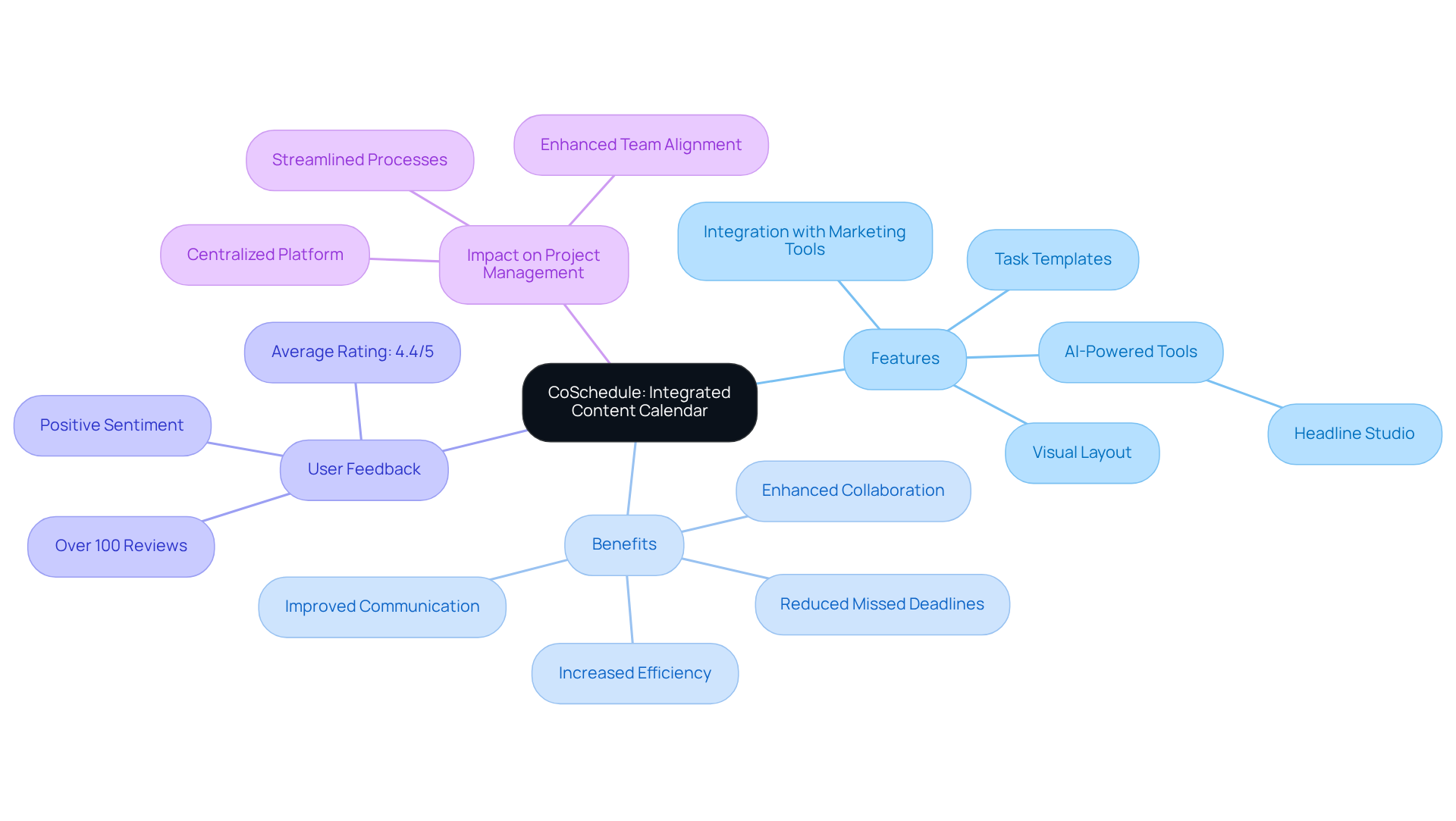
Teamup: Flexible Scheduling and Resource Management for Teams
In today’s fast-paced environment, communication inefficiencies can severely hinder operational effectiveness. Teamup addresses these challenges with a highly customizable job scheduling calendar that empowers groups to manage their schedules and resources with precision. Users can create color-coded sub-calendars for different projects or departments, significantly enhancing clarity and structure. This adaptability allows teams to adjust their schedules in response to shifting priorities, ensuring optimal resource utilization.
Organizations leveraging shared group calendars have reported a remarkable 30% decrease in planning time, a crucial factor in enhancing operational efficiency. Furthermore, groups save an average of 50 minutes each day, translating to approximately 11.3 hours weekly, thanks to the streamlined processes facilitated by these shared calendars. Such statistics underscore the transformative impact of an effective job scheduling calendar on productivity.
Real-world applications of customizable calendars reveal their profound influence on group dynamics. Teams can efficiently monitor the lifecycle of requests from submission to approval, thereby enhancing accountability and communication through a robust approval system. By adopting these tailored planning solutions along with a job scheduling calendar, groups not only optimize their operations but also foster a collaborative atmosphere that boosts both productivity and satisfaction. Explore how Teamup can revolutionize your team’s scheduling and communication today.
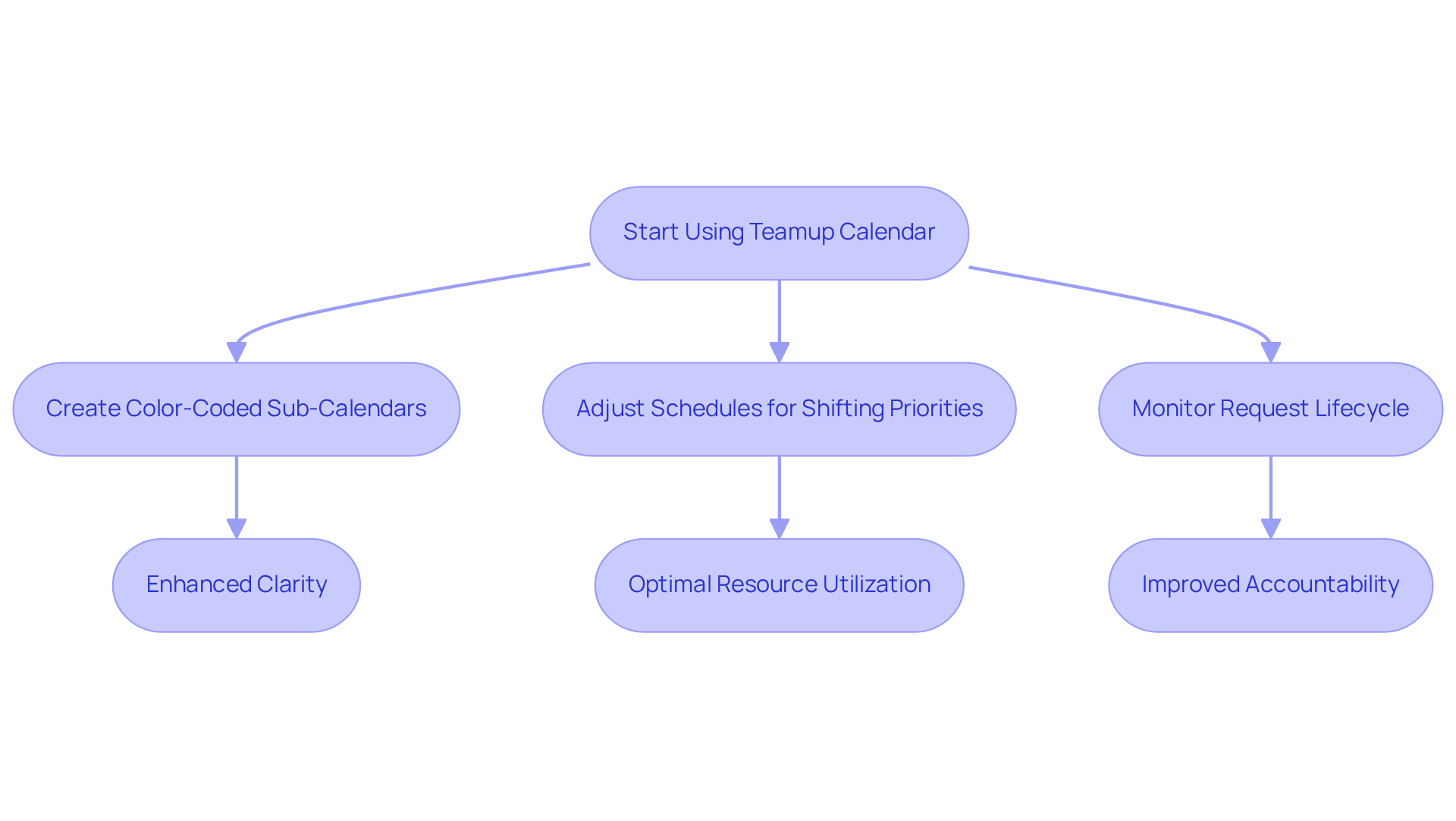
Visual Data Representation: Enhance Clarity with Multiple Views
Visual data representation tools address significant communication inefficiencies that many groups face today. By allowing teams to view their schedules in various formats – such as timelines, Gantt charts, or a job scheduling calendar – these tools enhance clarity and facilitate quick identification of planning conflicts or resource shortages. This multi-dimensional approach not only streamlines operations but also empowers teams to make informed decisions swiftly.
When data is visualized effectively, groups can proactively adjust their plans, leading to improved operational efficiency. Imagine a team that can instantly spot overlapping commitments or gaps in resources, enabling them to allocate time and assets more effectively. This capability transforms the way teams operate, fostering a culture of responsiveness and adaptability.
Incorporating visual data tools into your job scheduling calendar can revolutionize your planning processes. By embracing this innovative solution, you position your team to navigate challenges with confidence and precision. Explore how these tools can enhance your operational strategies and drive your success.
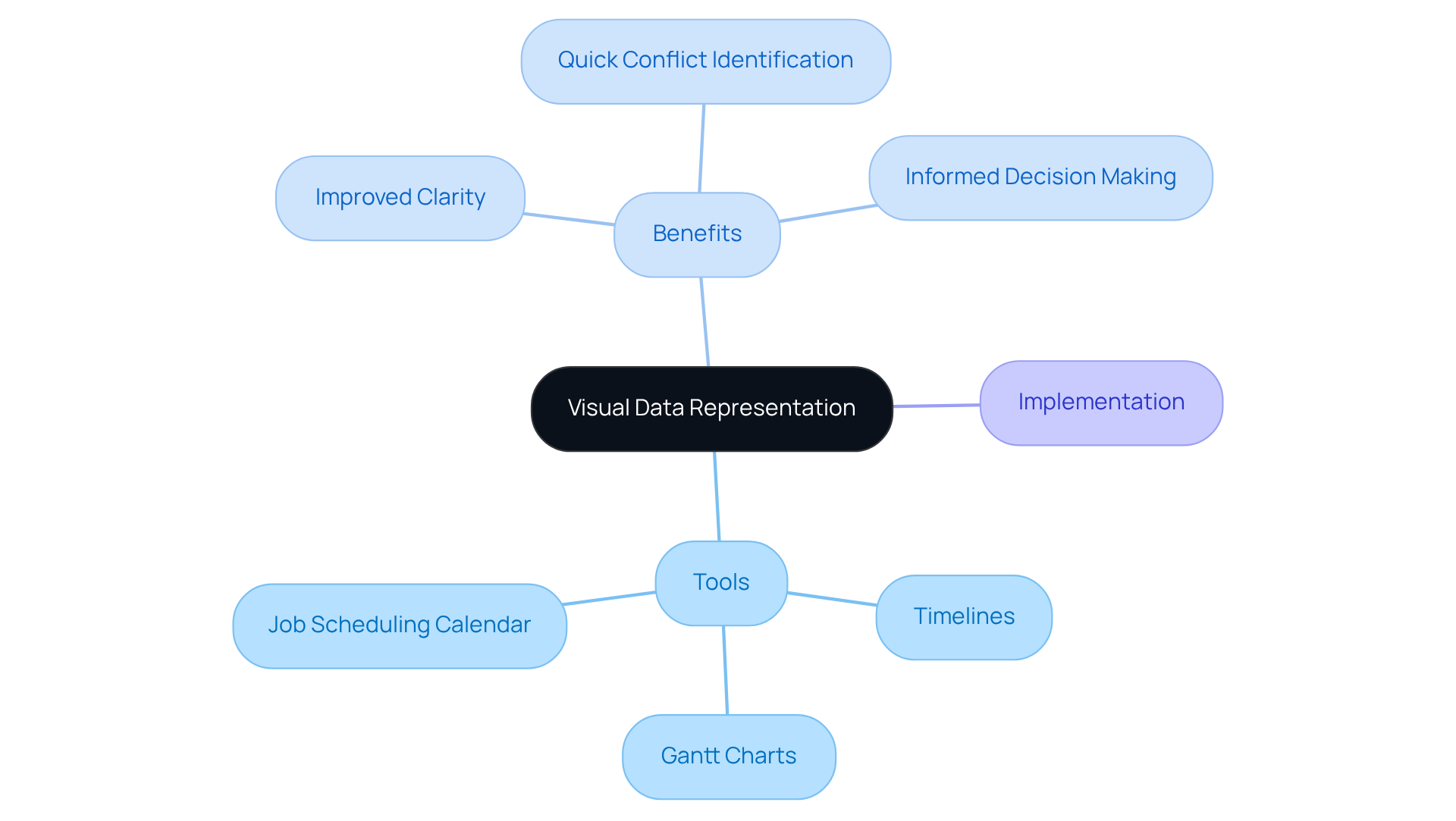
Schedule Integration: Eliminate Silos for Improved Communication
Integrating scheduling tools with communication platforms like Slack or Microsoft Teams addresses a critical operational challenge: communication inefficiencies. These tools facilitate seamless updates and notifications about meeting schedules, ensuring that all group members receive real-time information. As a result, the chances of miscommunication are significantly reduced, leading to improved collaboration across teams.
By breaking down silos, organizations can create a more unified work environment where everyone is aligned with common goals. For instance, companies utilizing integrated scheduling solutions report a remarkable 27% increase in productivity. Team members can easily access and share updates without the friction of switching between multiple applications, streamlining their workflow.
Moreover, with 63% of workers indicating they waste time due to communication issues, the ability to streamline interactions through integrated platforms is crucial for maintaining efficiency. Entities that prioritize these integrations not only enhance communication but also cultivate a culture of collaboration that propels success. Explore how these solutions, including a job scheduling calendar, can transform your team’s productivity and communication dynamics.

Availability Management: Optimize Resource Utilization
In today’s fast-paced business environment, communication inefficiencies can severely hinder operational success. Availability management systems address these challenges by enabling organizations to track the availability of their resources effectively. With real-time insights into resource availability, teams can make informed decisions regarding planning and project assignments. This proactive approach not only prevents overbooking but also ensures that resources are allocated where they are needed most, ultimately enhancing productivity.
Imagine a scenario where a project team is scrambling to find available resources at the last minute. This chaos can lead to missed deadlines and increased stress. By implementing an availability management system, organizations can streamline their operations, allowing for better planning and resource allocation. The result? A more efficient workflow that boosts overall productivity and morale.
These systems offer unique features that set them apart:
- They provide comprehensive dashboards that visualize resource availability, enabling teams to quickly assess their options.
- Additionally, automated alerts notify managers of potential conflicts before they escalate, ensuring smooth project execution.
Don’t let inefficiencies hold your organization back. Explore how availability management systems can transform your operations and drive success.

Customization Options: Tailor Scheduling Tools to Fit Unique Needs
In today’s fast-paced business environment, communication inefficiencies can significantly hinder productivity. Numerous planning applications now offer personalization choices that empower users to tailor features to their specific needs. This includes:
- Setting unique availability preferences
- Creating custom reminders
- Integrating seamlessly with other software utilized by the organization
By personalizing these planning tools, teams can enhance their workflows, ensuring that the resources they employ align perfectly with their operational processes. The result? A marked increase in efficiency and effectiveness.
Consider the impact of these personalized features: organizations can streamline their operations, reduce miscommunication, and foster a more collaborative environment. For instance, teams that leverage customized reminders report a 30% increase in task completion rates. Furthermore, integrating with existing software minimizes disruption and accelerates adoption, making the transition smoother for all users.
Ultimately, the ability to personalize planning applications is not just a convenience; it’s a strategic advantage. By embracing these tools, organizations can not only improve their internal processes but also position themselves for sustained success in a competitive landscape. Explore how these extensions can transform your operational efficiency today.
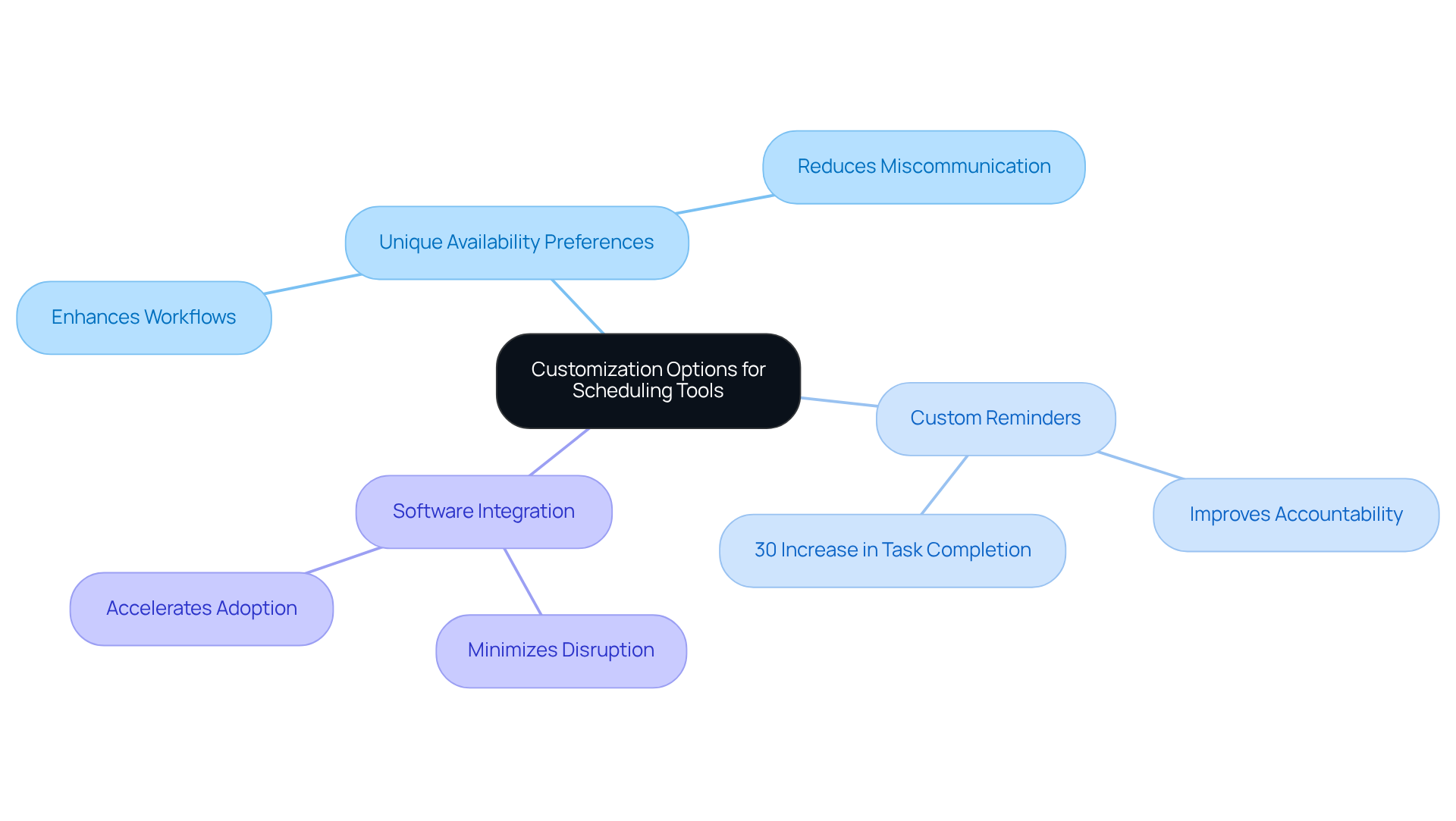
Event Sharing: Keep Stakeholders Aligned with Easy Access
Event sharing capabilities empower groups to seamlessly share their schedules with stakeholders, ensuring everyone stays informed about upcoming meetings and deadlines. This transparency not only fosters collaboration but also significantly mitigates the risk of misunderstandings. By granting stakeholders straightforward access to planning information, organizations can enhance communication and ensure alignment with project objectives.
Consider this: organizations that implement effective event sharing report a remarkable boost in team efficiency. In fact, 76% of users of project management software have observed improved communication outcomes. A compelling case study on strategic alliances in modern business illustrates how one company enhanced its operational efficiency through improved event sharing, showcasing the tangible benefits of this approach.
Moreover, with 61% of employees contemplating leaving their jobs due to poor communication and collaboration, the stakes are undeniably high. This strategy not only streamlines operations but also nurtures a culture of trust and accountability-essential elements for successful partnerships. As John C. Maxwell aptly states, “Strong partnerships don’t fade-they deepen with time,” emphasizing the critical nature of maintaining robust stakeholder relationships.
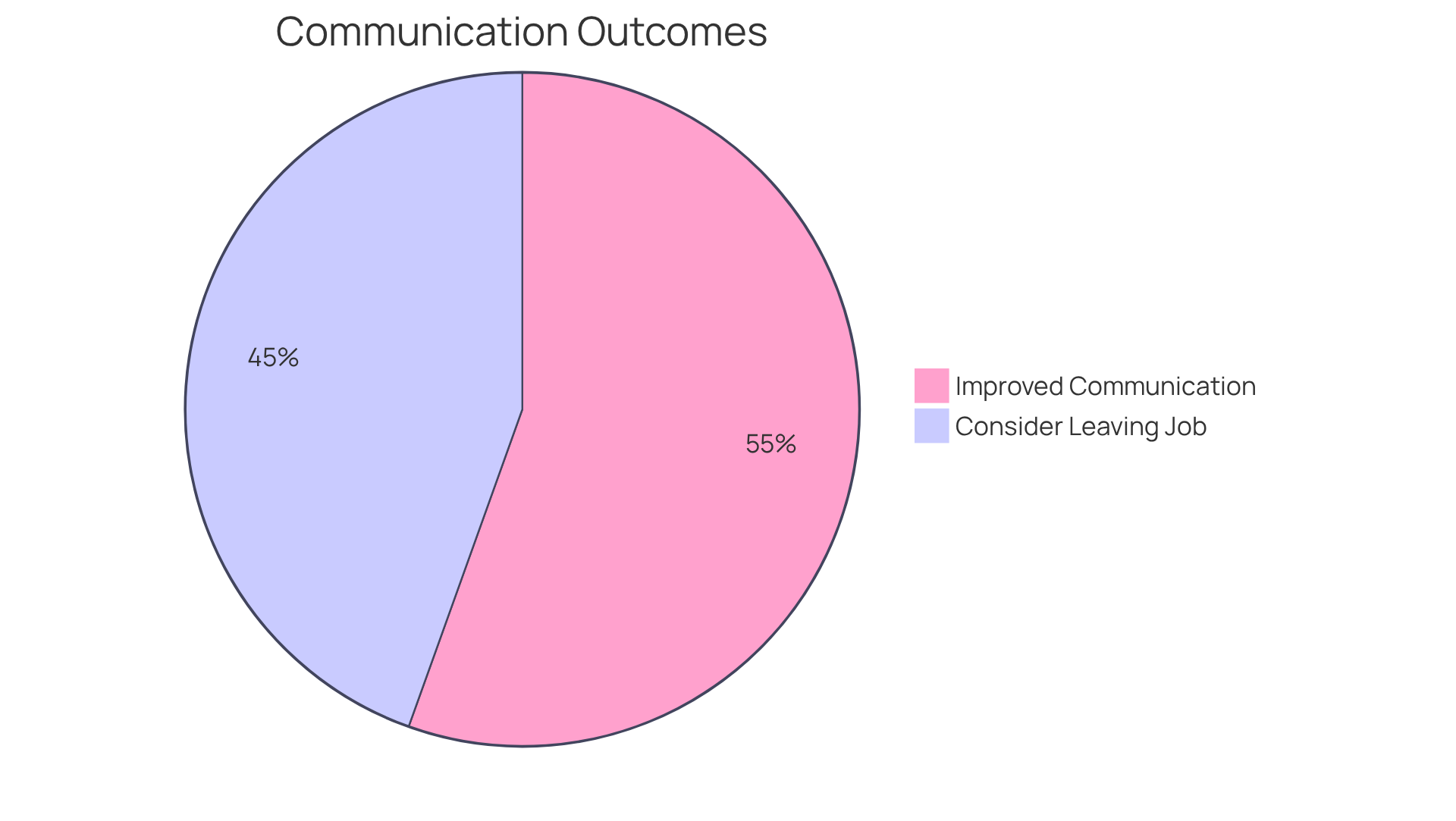
User Stories: Real-World Insights on Scheduling Efficiency
User narratives from entities that have adopted planning mechanisms offer invaluable insights into their effectiveness. These accounts not only illuminate the challenges faced but also detail the solutions implemented and the outcomes achieved. By learning from the experiences of others, companies can make informed decisions about which job scheduling calendar to adopt and how to optimize its use for maximum efficiency.
Consider the operational challenges that many organizations encounter. Inefficiencies in communication can lead to significant setbacks, impacting productivity and overall performance. By examining case studies of successful implementations, businesses can understand the tangible benefits of effective planning mechanisms. These narratives serve as a roadmap, guiding companies toward smarter solutions in their job scheduling calendar that enhance operational efficiency.
The unique features of these planning tools are compelling. They streamline processes, foster collaboration, and ultimately drive better results. Companies that embrace these insights not only improve their internal operations but also position themselves for future success. Explore the potential of these tools and discover how they can transform your organization’s approach to planning.

Event Calendar Publishing: Increase Visibility and Accessibility
The job scheduling calendar is a powerful tool that enables organizations to publish event calendars and share schedules, whether publicly or within specific groups. This capability significantly enhances visibility for key events, ensuring that all group members and stakeholders are well-informed about upcoming meetings, deadlines, and events. By minimizing the risk of missed opportunities, a job scheduling calendar not only improves collaboration but also fosters alignment among team members, driving everyone toward shared objectives.
For instance, organizations that utilize public calendars often experience improved stakeholder alignment. These resources promote transparency and communication, which are essential for effective teamwork. In fact, companies hosted 12% more in-person events in 2024, demonstrating the tangible impact of increased visibility on event hosting. The benefits of heightened visibility extend to team collaboration as well; when everyone is aware of each other’s schedules through a job scheduling calendar, it leads to more effective planning and coordination, ultimately boosting productivity and success.
Moreover, with 22% of event professionals identifying attendee engagement as their biggest challenge for 2025, accessible calendars can play a crucial role in addressing this issue. By improving the visibility of events, organizations can enhance engagement and participation. To fully leverage the advantages of job scheduling calendar publishing, organizations should consider integrating their job scheduling calendars with internal communication tools. This integration not only enhances collaboration but also fosters greater engagement among team members.
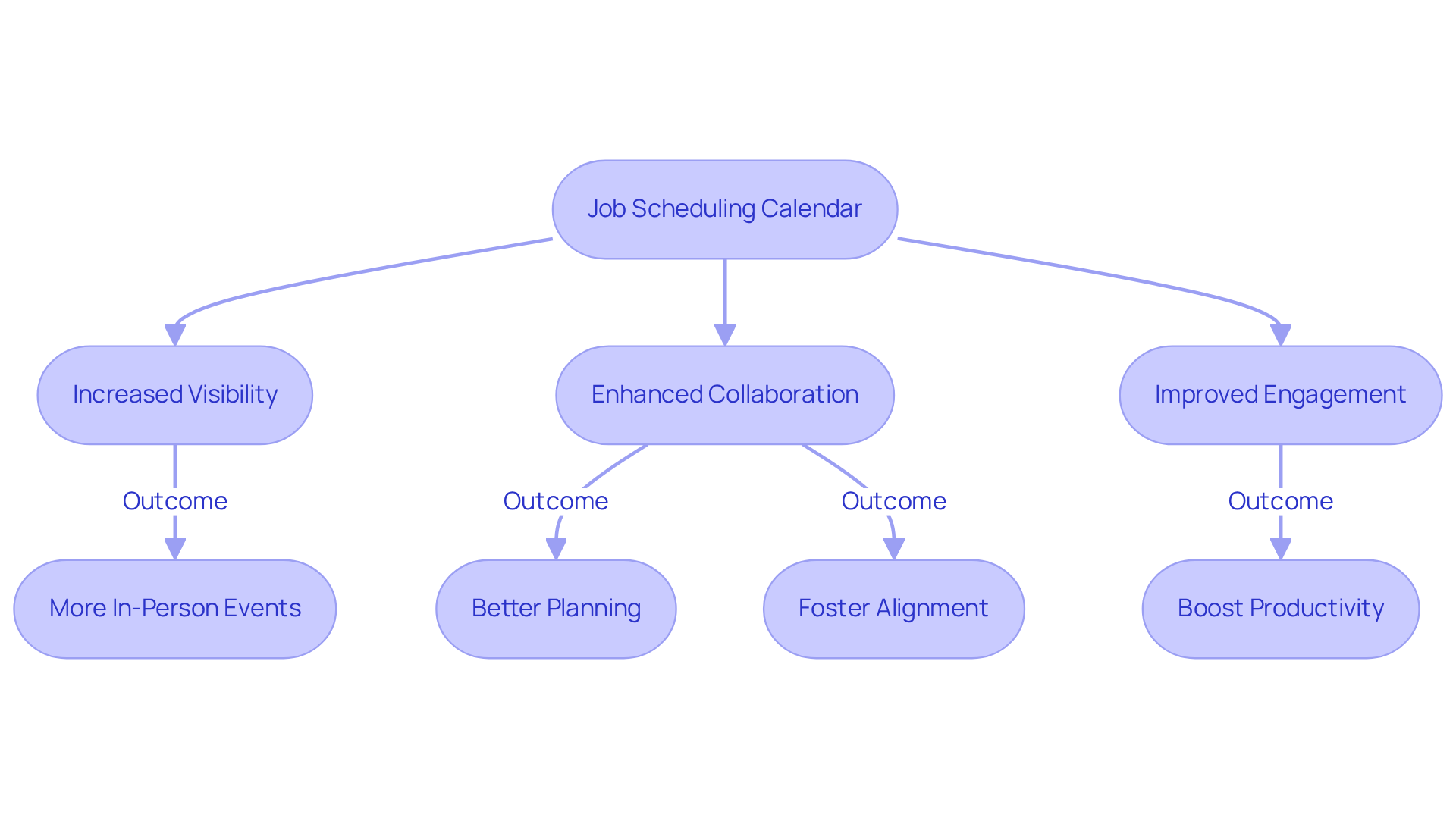
Conclusion
Embracing effective job scheduling tools is not just beneficial; it’s essential for enhancing organizational efficiency and productivity. Communication inefficiencies can cripple operations, leading to wasted time and resources. This article highlights innovative solutions that streamline scheduling processes, reduce these inefficiencies, and ultimately save valuable time. By integrating tools like AutoSuite, CoSchedule, and Teamup, organizations can transform their scheduling practices, allowing teams to focus on core objectives rather than grappling with logistical challenges.
Key insights illustrate the profound impact of effective scheduling on productivity:
- AutoSuite’s automation features minimize the time spent on meeting management.
- CoSchedule’s integration capabilities enhance project management efficiency.
- Teamup’s customizable calendars facilitate better resource management and adaptability, leading to significant time savings.
Moreover, the importance of visual data representation and event sharing cannot be overstated; these elements foster clarity and alignment among stakeholders, ensuring everyone is on the same page.
As organizations navigate an increasingly complex work environment, the significance of adopting robust scheduling tools becomes clear. By prioritizing these solutions, teams can cultivate a culture of collaboration and responsiveness, ultimately driving success. Investing in the right job scheduling calendar tools not only enhances operational efficiency but also positions organizations for sustained growth in a competitive landscape. Explore these tools and discover how they can revolutionize your approach to scheduling and productivity.
Frequently Asked Questions
What is AutoSuite’s Schedulelink feature?
AutoSuite’s Schedulelink feature allows users to schedule appointments instantly and effortlessly within the job scheduling calendar, aiming to improve coordination and reduce communication inefficiencies.
How much time do employees spend managing meetings on average?
Employees spend an average of 3.0 hours per week managing meetings, which equates to about 36 minutes each day.
What are the financial implications of inefficient meeting management?
Inefficient meeting management can cost a company approximately $5,914 per employee annually. Reducing unproductive meeting time by just one hour per week could save a company with 5,000 employees nearly $9.8 million each year.
How does AutoSuite help minimize scheduling conflicts?
By automating the booking process, AutoSuite minimizes the risk of double reservations and scheduling conflicts, which are common in traditional job scheduling methods.
What is the projected growth of the appointment management software market?
The appointment management software market is projected to grow at a CAGR of 9.2% from 2024 to 2034, indicating a rising demand for effective scheduling solutions like AutoSuite.
What is CoSchedule and how does it enhance project management?
CoSchedule is an integrated content calendar that empowers teams to plan, schedule, and publish content efficiently while enhancing communication and reducing the risk of missed deadlines.
What benefits do teams experience when using CoSchedule?
Teams using CoSchedule report improved collaboration and timely project completion, with an average rating of 4.4 out of 5 stars from over 100 reviews.
How does Teamup improve scheduling and resource management for teams?
Teamup provides a highly customizable job scheduling calendar that allows users to create color-coded sub-calendars for different projects or departments, enhancing clarity and enabling teams to adapt to shifting priorities.
What are the productivity benefits of using shared group calendars?
Organizations using shared group calendars have reported a 30% decrease in planning time and save an average of 50 minutes each day, translating to approximately 11.3 hours weekly.
How do customizable calendars impact group dynamics?
Customizable calendars enhance accountability and communication within teams by allowing efficient monitoring of requests from submission to approval, fostering a collaborative atmosphere that boosts productivity and satisfaction.
